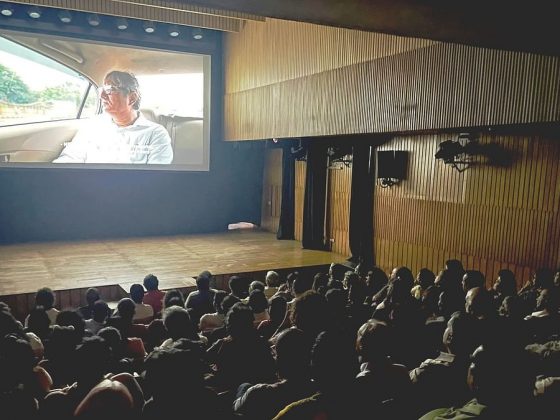My parents took me to the Wagah Border at the age of 9. The innocent kid inside of me was enamored by the formation of the soldiers. In the end, I even insisted my dad to shake hands with one of the Armed personnel there. After the program got over, I was a bit curious to cross the gate by placing my leg between the line. Human nature has always been about transcending and breaking borders, and National Award-winning filmmaker Samarth Mahajan’s new documentary, “Borderlands”, features vignettes of six such individuals living near the borders of India. It provides an insight into the lives of these people who want to transcend these external arbitrary lines for a better life.
A Peephole Into The Unnoticed Lives
According to the Ministry of home affairs, India as a country has a stretch of approximately 15000 kms of land border. When I first heard about “Borderlands”, I thought how it would probably talk about the Indian border conflicts and the armed forces working there. But, to my surprise, the filmmaker instead chooses to display the vignettes of lives of the people living near the borders. While Deepa aspires to be a nurse, Surjankantha is a bold the filmmaker making stories about Manipur. A middle aged woman, Dhauli, yearns to meet her family, while a young Kavitha is resilient to rescue girls being trafficked across the Indo-Nepal border. There’s also the patriotic mother Rekha and Noor from Bangladesh who once survived from human trafficking ring. The film uses these stories to narrate the influence of geography shaping the lives of humans. Not only that, Samarth gives a more empathetic outlook to these stories rather than making them sympathetic just for the merits of giving the documentary a distinct tone.
Respecting the Subjects
Among the many fascinating aspects of the documentary, the primary aspect that struck the chord to me was the filmmakers’ respect towards his subjects. The tale of Noor, a queer-Bangladesh teenager who is one among the individuals saved from human trafficking, now resides in a shelter home in Kolkata. She narrates the cruel acts of the trafficking ring and her attempts of self-harm which trigger the psyche. Samarth could have simply shown her face for pure sakes of sensationalism. But he chooses confidentiality while maintaining the privacy of Noor. Another instance is the tale of Rekha, the mother of the filmmaker living near the Wagah border who has hasn’t yet gotten the chance to visit it. Moments like these throughout the runtime show how the filmmaker and the crew may have plunged themselves into the lives of their subjects rather than being a distanf intruder.
The Borders That Lie Within
The documentary not only examines the effects of external borders, but also the ones that we internalize. While the arbitrary lines divide two lands geographically, we humans make psychological demarcations between the people we love and who we want us to be. With the story of Rekha, we see her share how the shackles of household chores have kept her trapped inside the home. She poignantly describes the yearning between herself and her love of her children. The facet makes the film self-reflective, particularly by emphasizing on the need for humans to hold on to their gregarious nature. A similar parallel can be seen with Dhauli’s tale – a woman living near the border of Bangladesh who hasn’t visited her familial home in 15 years. The moment where Rekha visits the Wagah Border and Dhauli sharing things across the fence with her familial home adds to the catharsis anchoring the wider emotional narrative. The story of Noor, on the other hand, represents the challenge surrounding queer acceptance which in itself comes across as a testament the borderless nature of love.
The Pragmatism and Hope
The film doesn’t really shy away from showing the pragmatism and unfiltered approach of people living near the borders. With the tale of Deepa, we see the woman narrate her aspirations of nurse and also, she enacts the procedures of nursing with film crew making way for the most playful moments in the film. She presents clear contrast between the education systems of both the countries and also the inability to achieve the life intended yet she remains pragmatic in her approach towards the life. Kavita’s attempts of rescuing girls from human trafficking across the border bear resemblance to Deepa’s approach to her life. The Manipuri Filmmaker Surjakanth gives an account of the socio-political status of his state and how the medium of films can provoke conversations around his state. In a meta-way using this story, the film “Borderlands” itself acts as a means of highlighting the issues of borderlands pertaining to the words of Filmmaker Inarritu “Films transcend borders”. All these stories share the common thread of hope that there’s some good in this world and it’s worth fighting for
Realism At Its Finest
The documentary subverts the usual nature of talking heads but instead makes way for the audience to live the intimate lives of these people. Omkar Divekar’s handheld camera work adds a lot of realism to the narrative and each story has a distinct visual tone with each other. Combined with the editing by Anadi Athaley, the film lingers us with the mundanity and humility of the people’s lives. The intricate sound design by Ankur Chaudhary gives the space for silence conducting the liveliness to the viewers. The Music by Shayan Sinha, Laurie Kallevig, Survivor Girl Ukulele Band, Kamruzzaman Rabbi adds the soulful stir and warmth to the documentary. In a nutshell, with “Borderlands”, Samarth Mahajan provides a relevant, empathetic and captivating account of overlooked lives of people across the borders by subverting the sensationalism that stories of this kind usually resort to.











